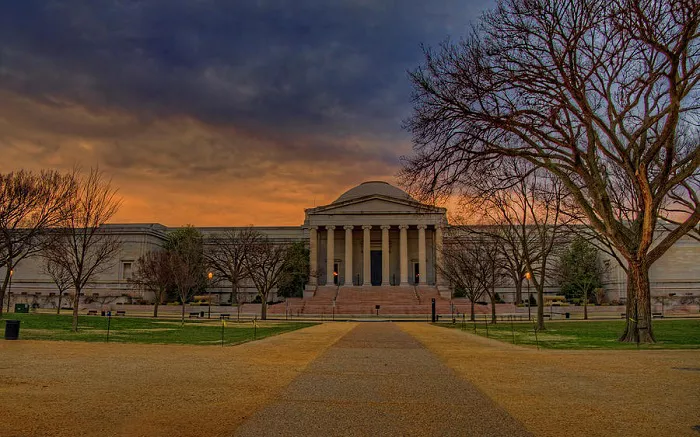For nearly nine decades, the National Gallery of Art and the Smithsonian’s National Museum of Natural History have stood as neighbors in Washington, DC—yet they have never collaborated in a significant way until now. This summer marks a groundbreaking partnership between the two institutions, unveiling an innovative exhibition that merges centuries-old artwork with actual natural specimens.
The exhibition, titled “Little Beasts: Art, Wonder, and the Natural World,” highlights a transformative era beginning in the 1500s when Northern European artists, inspired by exotic specimens arriving in Antwerp via merchant ships, began producing exquisitely detailed and scientifically accurate depictions of the natural world. These works portray creatures ranging from the tiniest insects to the largest mammals with unprecedented precision.
Visitors will encounter a striking juxtaposition of art and nature. One display features a specimen of the Central American elephant beetle from the Smithsonian’s extensive collection, measuring roughly the size of a baby’s fist with its formidable horned armor. Adjacent to it hangs Jacob Hoefnagel’s 1592 painting of the same beetle, created with brushes so fine they sometimes consisted of a single hair.
Nearby, 17th-century Czech artist Wenceslaus Hollar’s etching of the delicate Tasmanian vasum ceramicum shell is paired with an actual shell from the Smithsonian’s vast natural collection, highlighting the surreal beauty captured by early naturalists and artists alike. Another notable piece is Hoefnagel’s life-sized Southern Hawker dragonfly painting, accented with gold paint to give the impression that the insect might take flight. This painting is displayed alongside a real dragonfly, temporarily brought out from the Smithsonian’s climate-controlled archives. Remarkably, recent research shows Hoefnagel occasionally attached actual dragonfly wings to his artworks, underscoring his obsession with authenticity.
The exhibition spans three halls, immersing visitors in a pivotal historical moment when artists, often armed with magnifying glasses, assumed the role of pioneering natural historians. The pairing of artworks with corresponding natural artifacts vividly demonstrates the meticulous research and observational precision involved in these creations.
While the National Gallery of Art occupies a prominent place on the National Mall, it operates independently from the Smithsonian. This collaborative exhibition, therefore, represents a novel partnership for both institutions. Alexandra Libby, curator of Northern Paintings at the National Gallery, explained that the idea for the exhibit originated during the pandemic. “We began exchanging emails to generate enthusiasm at the Smithsonian,” she said. “We emphasized that these are not merely decorative butterfly pictures but represent genuine scientific inquiry from the era.” The Smithsonian responded enthusiastically, embracing the project as “amazing.”
Brooks Rich, curator of Old Master art at the National Gallery, reflected on the significance of the exhibition’s historical context. “This flourishing interest in nature’s minutiae laid the groundwork for the entire discipline of natural history,” he noted. The exhibition invites visitors to trace the origins of scientific observation and appreciate the artistry that helped shape humanity’s understanding of the natural world.


